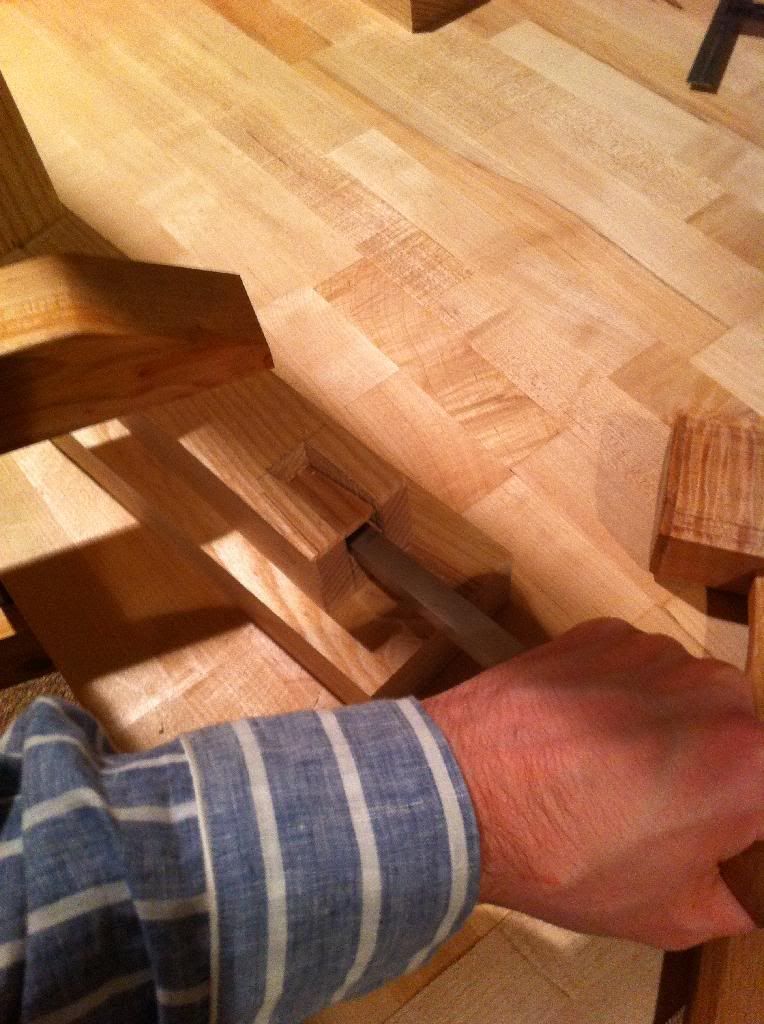I have a lot of cautionary tales I don't have time to share here, but since there is so much dovetail action right now I thought I should mention this. Thanks to the largesse of some family members who live in Maine, I have a fancy new dovetail saw with a .015 plate. It works great!
However, when I finally used it to cut dovetails, I was unable to cut out the tails with my coping saw. I tried some stuff, even going to the extreme of putting in a sharp new blade, to no avail. Eventually I realized the kerf was too thin to turn the corner.
Now, a tiny forum-reading part of my brain started worrying about a new aerospace-grade coping saw, and how I could afford the extra cost for a wooden handle... but in reality, I just need a thinner coping saw blade. Where does one buy these?
(The immediate problem was solved by rekerfing the tails with a regular backsaw. Which maybe would have worked better in the first place. But then why do I "need" the fancy new dovetail saw?)




 Reply With Quote
Reply With Quote













